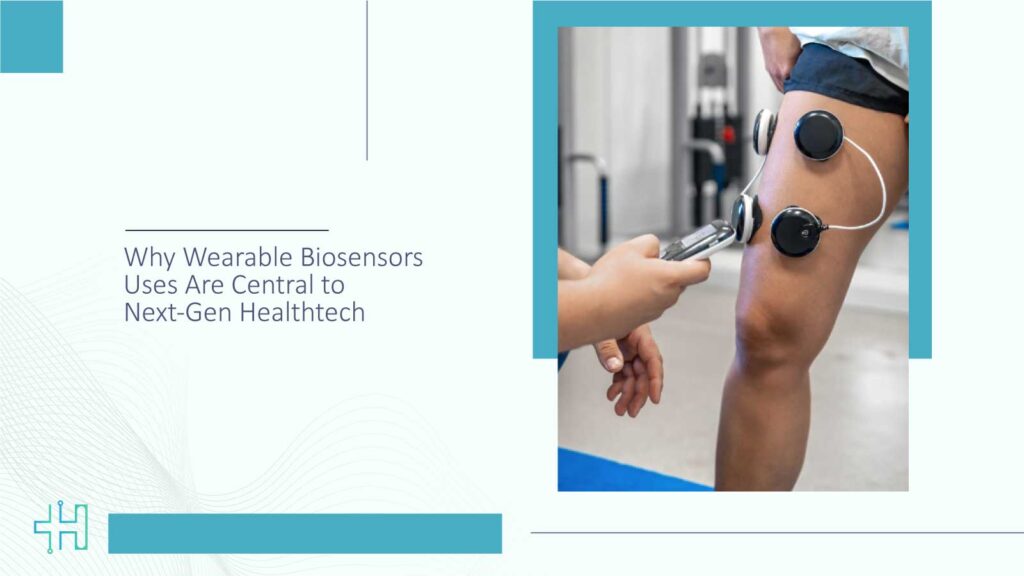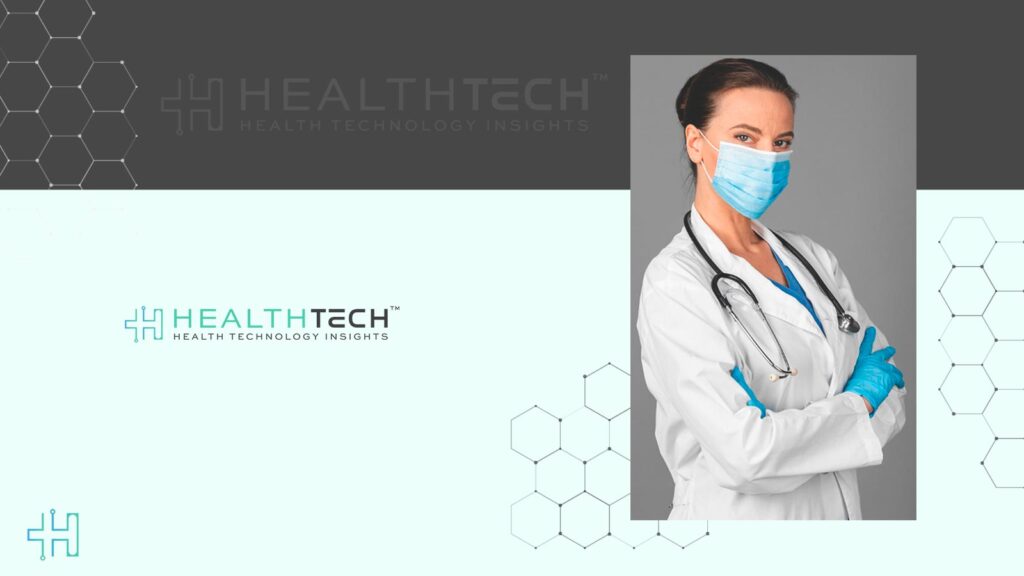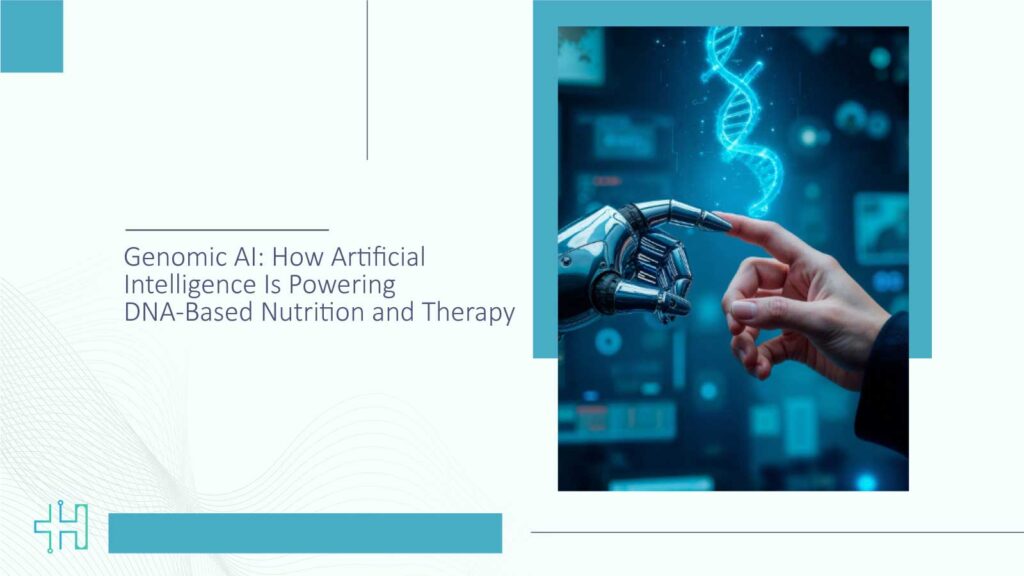In today’s fast‑paced world, we all crave smarter, more personal health tools. That’s why wearable biosensors uses are becoming the backbone of next‑gen healthtech. From subtle wristbands tracking glucose to contactless skin sensors, these devices offer constant, non‑intrusive care.
In this article, we’ll dive into how they’re reshaping healthcare, driven by real-world successes, expert insight, and hard data, with actionable takeaways for industry leaders, tech enthusiasts, and everyday health seekers alike.
1. A Skyrocketing Market Backed by Data
When investors, hospital systems, and tech giants all double down on the same category, it’s more than a passing trend. The wearable biosensors market is proving that point.
a. Rapid Global Growth
In 2024, the global market for wearable biosensors reached US $1.87 billion. Forecasts expect it to climb to $2.29 billion in 2025 and surge to over $11.22 billion by 2033, at a CAGR of 22.4%. These are numbers healthtech boards can’t afford to ignore.
b. The Broader Wearables Ecosystem Is Fueling It
While biosensors are advancing rapidly, they benefit from the massive footprint of wearable tech in general. The wearable technology market, which includes smartwatches, fitness trackers, and sleep rings, surpassed $84 billion in 2024 and is set to exceed $98 billion in 2025.
What does this mean for biosensors? Lower hardware costs, broader user acceptance, and faster paths to scale.
c. Enterprise Adoption Is On the Rise
Healthcare providers and employers are increasingly piloting wearable biosensor programs, whether to support remote patient monitoring, improve population health insights, or reduce the cost of chronic disease management.
Nearly 75% of healthcare provider executives anticipated increasing their expenditure on software and technology, including remote monitoring and home health technologies, over the next 12 months, according to a Bain & KLAS poll cited in a summary of findings from ViVE and HIMSS events.
2. Real-Time, Continuous, Highly Personalized Data
Wearable biosensors transform healthcare by doing something that traditional tools can’t: monitor health continuously and non-invasively. That one breakthrough changes everything, from diagnosis to prevention to behavior change.
Let’s look closer at how this plays out across different categories:
a. Contactless Monitoring: Healing Without Wires
Northwestern University’s 2025 innovation, a gas-sensing wearable that doesn’t touch your skin, is a glimpse into the future. This featherweight patch, no bigger than a Band-Aid, can detect CO₂ levels, volatile organic compounds (VOCs), and hydration cues from a short distance.
It’s designed to monitor wound healing in post-surgical patients without needing to be changed or physically attached.
Why it matters: reducing skin irritation, infection risks, and patient discomfort, especially in pediatric and geriatric care.
b. Off-Grid Power: The Rise of Energy-Autonomous Devices
At UC San Diego, engineers developed a finger wrap powered entirely by sweat. It harvests small amounts of bioenergy through fingertip moisture and uses that energy to analyze glucose, vitamins, and drug levels, with no batteries required.
That’s right. No need to plug it in, charge it, or worry about power sources. It’s off-grid, passive, and continuous.
This is a game-changer for remote and rural care, where infrastructure may be limited but the need for ongoing health monitoring is just as high.
c. Personalization: Data That Works for the Individual
Not all biomarkers tell the same story for everyone. That’s where wearable biosensors shine. By capturing real-time, individualized data, from temperature fluctuations to heart rate variability, biosensors create a personal health fingerprint.
Consider continuous glucose monitors (CGMs) like Dexcom or Abbott’s FreeStyle Libre. They’re not just for diabetics anymore. Fitness-conscious users are now adopting them to optimize metabolic performance, sleep, and even intermittent fasting routines.
d. Human-Centric Design: Form Meets Function
Gone are the days of clunky chest straps and adhesive nightmares. The latest generation of biosensors is ultra-light, flexible, and skin-friendly.
Companies like GraphWear Technologies are pushing boundaries with skin-like graphene biosensors that don’t require sweat to actively stream data. These thin-film wearables are designed to fade into daily life, making passive health monitoring frictionless.
Patients aren’t just wearing these devices; they’re embracing them. That’s critical for long-term engagement and data quality.
e. Multimodal Sensing: One Device, Many Insights
Many of today’s wearable biosensors no longer measure just one biomarker. New devices are multi-sensing platforms that can track everything from electrolyte levels to body movement, all in one patch.
Take the i-CardiAx system: it uses accelerometers and neural nets to detect early signs of sepsis, while simultaneously logging cardiovascular activity and temperature. It gives clinicians a 360-degree view of what’s happening beneath the skin.
This holistic data fusion is where AI, cloud analytics, and biosensors intersect to power next-gen decision support.
Why This Matters for U.S. Healthtech Leaders
The future of care isn’t just digital, it’s predictive, personalized, and always on. As healthcare leaders navigate workforce shortages and rising patient demands, wearable biosensors are emerging as quiet game-changers.
Here’s why they’re becoming essential for the next generation of U.S. healthtech:
Population aging & chronic disease
With more seniors and chronic conditions, passive monitoring can ease the burden on healthcare systems.
Preventive, not reactive care
Sensors pick up biomarker changes long before symptoms appear, empowering timely action.
Integration with Telehealth & IoM
Seamless data to clinicians, remote, secure, actionable.
Consumer expectations have shifted
People want smart tech that’s also medically trusted.
Case Studies in Action
From nimble startups to leading universities, real-world breakthroughs are showing how non-invasive sensors can reshape health monitoring and preventive care.
Here are a few standout examples driving the future forward:
Startup Success: EnLiSense
EnLiSense’s sweat wearable detects alcohol via Ethyl Glucuronide in real‑time, a non‑judgmental tool for safe, monitored consumption.
University‑Driven Innovation
- Black phosphorus nanostructured patches deliver non‑enzymatic sweat glucose tracking with high precision.
- Optical SPR‑based wrist devices for sweat glucose detection show promising real‑world accuracy.
These bring lab breakthroughs into real‑world, user‑friendly formats.
What’s Next on the Horizon?
- Non‑contact sensing: gas detection over wounds and skin.
- Low‑power wearables: like sweat‑powered monitors.
- Sensor‑AI synergy: tools for disease early‑warning, mental health tracking, sepsis alerts.
- Mainstream adoption: Empatica projects astronaut and infection detection wearables for major public health use.
Wearables are no longer fringe gadgets; they’re a robust layer in clinical, everyday, and remote care silos.
Prescription for Healthtech Decision‑Makers
- Foster early sensor pilot programs in hospitals and clinics.
- Use cross‑disciplinary teams: engineers, clinicians, data scientists.
- Build secure, scalable data streams into existing EHRs and tele‑health systems.
- Engage patients: focus on comfort, transparency, utility, not surveillance.
- Balance innovation with regulatory pathways to build credibility.
Human-Centered Healthcare Through Advanced Biosensors
Wearable biosensors are transforming healthcare from prevention and chronic care to mental health and critical illness monitoring. For healthtech leaders, the opportunity is clear: invest now, partner broadly, and prioritize solutions that deliver real-world impact. Those who do will shape a future where care is continuous, personalized, and profoundly human.
FAQs
1. How do wearable biosensors improve daily patient care?
They capture continuous physiological data, like glucose, temperature, or heart rate, letting clinicians detect issues sooner and tailor interventions more precisely.
2. Are these devices accurate enough for medical use?
Yes. Products such as CGMs and Empatica’s FDA-cleared seizure monitor demonstrate medical-grade accuracy, while new sensors are validated in clinical trials.
3. Can wearable biosensors help with mental health monitoring?
Indeed. A 2025 systematic review found that AI models using biosensor data can predict stress and mood episodes, enabling proactive support.
4. What about battery life and ease of use?
Recent innovations, such as sweat-powered sensors and low-power patches, offer long-lasting power and minimal user intervention, improving compliance.
5. How do these tools affect healthcare costs?
By enabling early intervention and reducing hospital visits, they can lower long-term costs. Plus, seamless telehealth integration eases clinician workload and increases efficiency.
Dive deeper into the future of healthcare.
Keep reading on Health Technology Insights.
To participate in our interviews, please write to our HealthTech Media Room at sudipto@intentamplify.com





